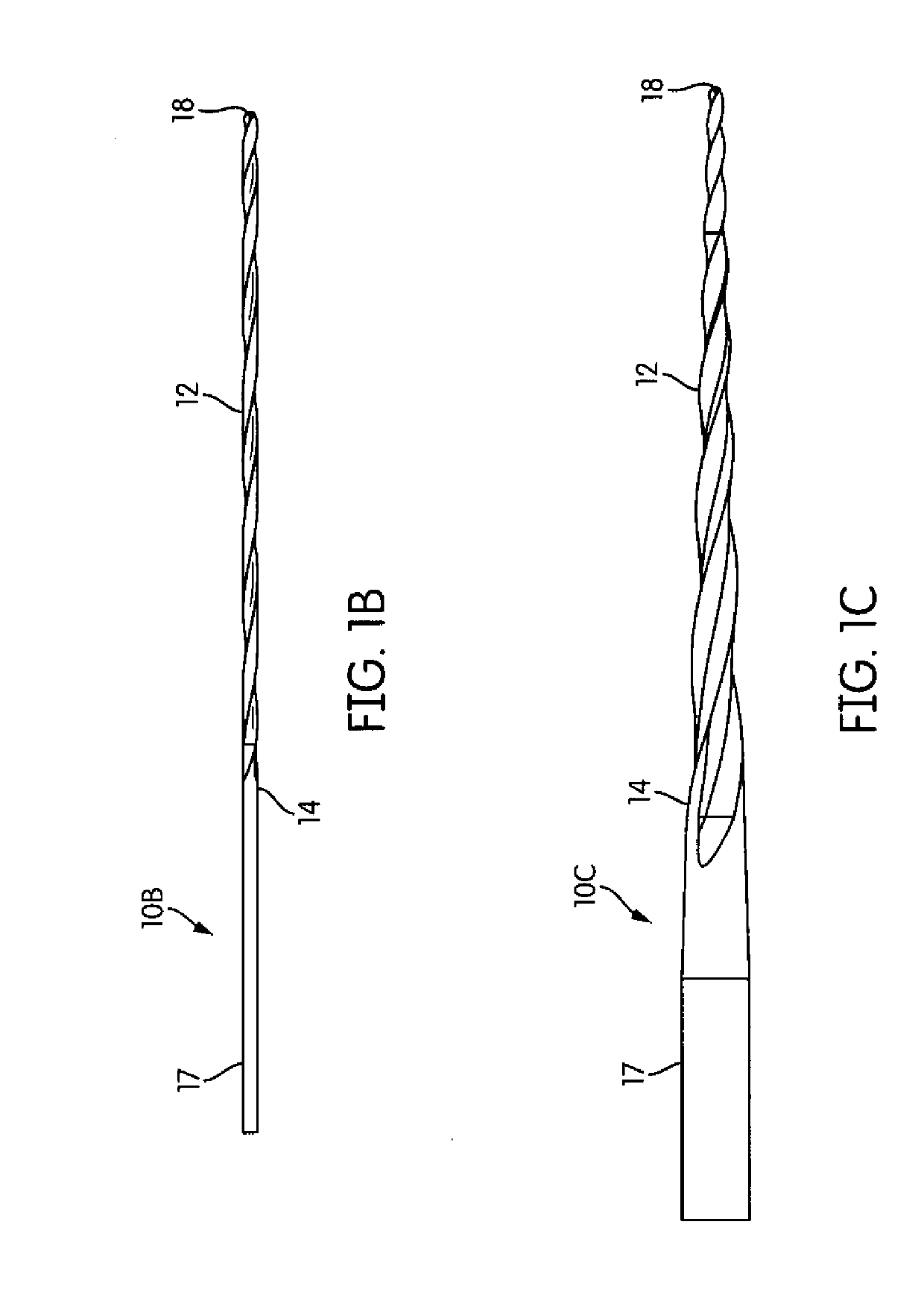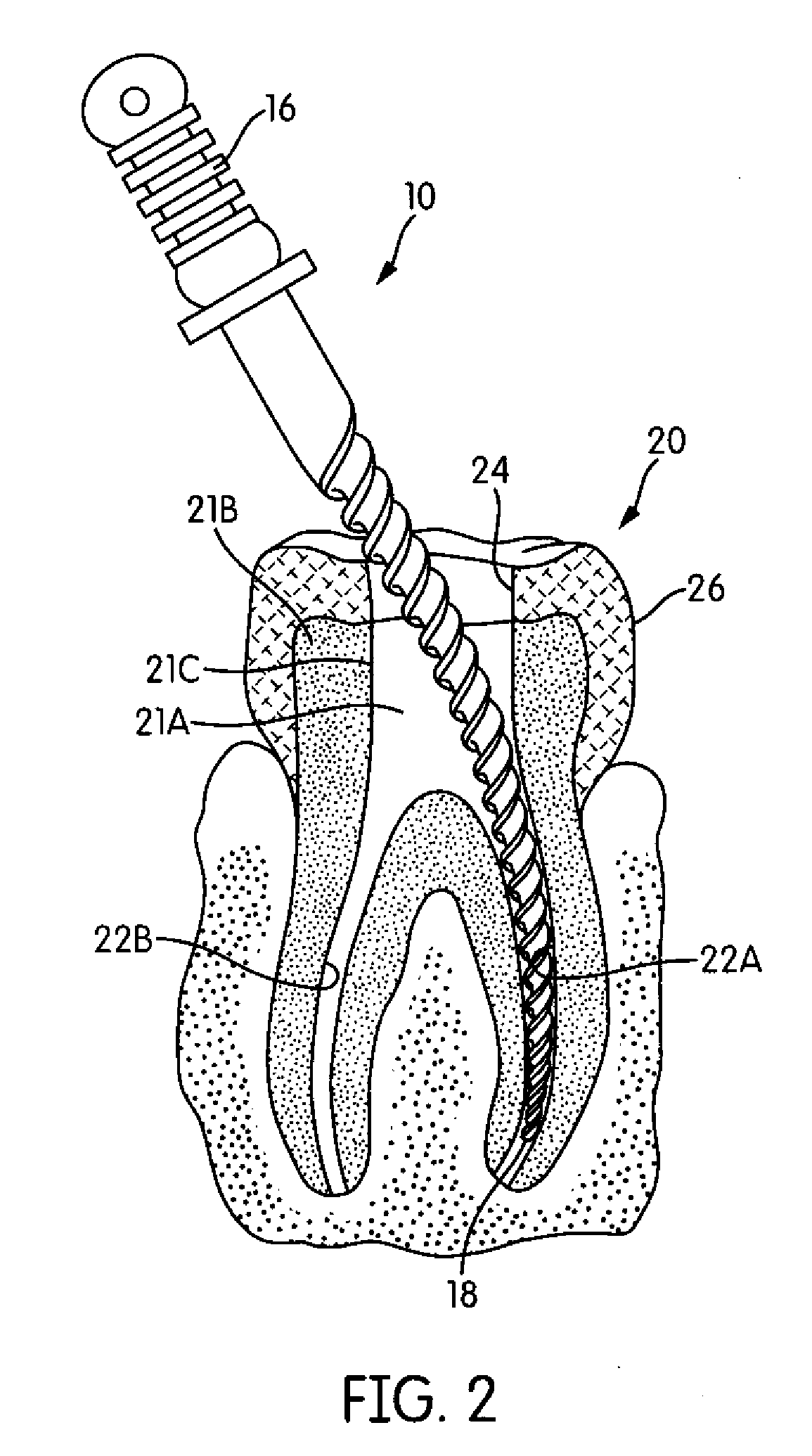Endodontic instruments and methods of manufacturing thereof
a technology of endodontic instruments and manufacturing methods, applied in the field of rotary files, can solve the problems of less cutting efficiency, less surface contact, and more susceptible to breaking within the canal, so as to prevent fluting from being damaged, reduce the removal of dentin layers, and increase surface conta
- Summary
- Abstract
- Description
- Claims
- Application Information
AI Technical Summary
Benefits of technology
Problems solved by technology
Method used
Image
Examples
Embodiment Construction
[0037]Superelastic materials are typically metal alloys which return to their original shape after substantial deformation. Examples of efforts in the art towards superelastic materials are found in U.S. Pat. No. 6,149,501, which is herein incorporated by reference for all purposes.
[0038]Superelasticity may be generally defined as a complete rebound to the original position after deformation. However, in the industry, it is appreciated that less than 0.5% permanent set (after stretch to 6% elongation) would be acceptable. For example, if the file does not reverse to its original position, it may no longer be considered a superelastic Shape Memory Alloy (SMA) (e.g., it may not be considered a superelastic SMA if it does not return to a generally original position such as a generally straight position). Superelastic alloys such as nickel titanium (NiTi) or otherwise can withstand several times more strain than conventional materials, such as stainless steel, without becoming plastical...
PUM
| Property | Measurement | Unit |
|---|---|---|
| finish temperature | aaaaa | aaaaa |
| finish temperature | aaaaa | aaaaa |
| temperature | aaaaa | aaaaa |
Abstract
Description
Claims
Application Information
 Login to View More
Login to View More - R&D
- Intellectual Property
- Life Sciences
- Materials
- Tech Scout
- Unparalleled Data Quality
- Higher Quality Content
- 60% Fewer Hallucinations
Browse by: Latest US Patents, China's latest patents, Technical Efficacy Thesaurus, Application Domain, Technology Topic, Popular Technical Reports.
© 2025 PatSnap. All rights reserved.Legal|Privacy policy|Modern Slavery Act Transparency Statement|Sitemap|About US| Contact US: help@patsnap.com



